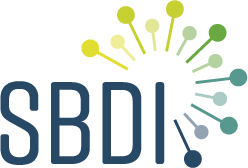Because of the internal synchronization within the SBDI Data Tier, the choice of data publishing tool is largely a matter of convenience. Current data flows that use either the Integrated Publishing Toolkit (IPT) or the Species Observation System (SOS)—including its predecessors within the Swedish LifeWatch infrastructure—can essentially remain as is, that is, publishing can continue through established routines. In case a data resource is currently published through both tools, the data publisher can decide on the best way to move forward depending on the respective dataset/database.
For new datasets that have not been published previously, it is worth spending some effort on considering the alternatives and their implications. If the goal is to share sensitive data on Swedish species, or if the dataset is updated very frequently, then SOS offers the best fit. In other cases, IPT may be the better option because of its longer history of integration with the GBIF and Bioatlas infrastructure and its wider international adoption. The IPT and LA tools are better adapted for data providers who want to handle the data publication process themselves—there are many documentation and training resources for IPT in different languages. The IPT and LA tools are also more suited to the publication of datasets including observations/records from locations outside Sweden, and where the intended audience is the international research community. For instance, it may be more important in this context to match taxon names to the GBIF backbone than to Dyntaxa, in the rare cases when they are not consistent, and to share records with taxon names that are not yet in Dyntaxa. Furthermore, the IPT supports all registered DwC extensions. The SOS may be a better option if the data contain exclusively occurrences from inside Swedish boundaries or if the primary audience is Swedish government agencies, as SOS offers specific interfaces, including permission handling of access to sensitive raw data. If the purpose is to share a checklist only with SBDI users for particular data analyses, and not publish it to GBIF, then the Bioatlas Lists module is the most convenient publication tool.
These are only general guidelines, and the devil is in the details. Fortunately, a general trend is that the national and international data publishing tools are converging, so that the differences between publishing using different pipelines are becoming less and less significant over time. The publication tools are also constantly improving and best practices are changing. Additional information can be found in the guides for respective SBDI publishing tool (IPT, SOS, LA)
Do not hesitate to contact the SBDI Support Center for further guidance and discussion on how to publish your datasets.
